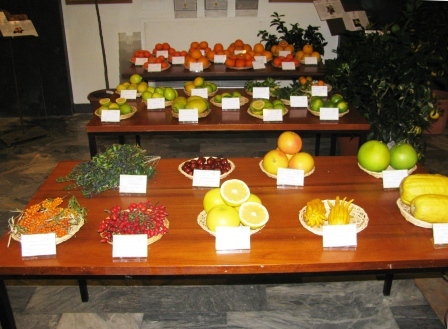- REALLY old fruit found in Chinese cellar.
- Marufo the same as Brujidera? Say it ain’t so!
- Rachel Laudan deconstructs a French depiction of cider-making. Well, someone had to.
- Genetic modification dates back to ancient Mexico.
- Rejoice, Plant Cuttings is out!
- Seeds of alpine plants don’t live as long as those of lower altitudes. So how many crop wild relatives are high-altitude species I wonder?
- Get your teeth into the work of the Transylvanian Rare Breeds Association.
Nibbles: Micro-gardens, Bananas, School farm, Tourism, Conservation, Cancun, Rice, DNA, Rice again, Obesity, Coconut
- “It is urgent to mainstream urban and peri-urban horticulture, and to recognize its role as a motor in food security and nutrition strategies.” Course it is.
- Top banana conference opens in Trichy, India.
- School grows more than food; pupils and money too.
- Ford has a great idea: Science Tourism. We’ve done a lot of that ourselves, but never categorized it.
- ICRISAT protects non-agricultural biodiversity shock.
- Cancun and agriculture: poised for success … imperiled … and finally, footnoted.
- Meanwhile, our pals at the Climate Change blog ask the tough questions. Answers on a postcard, please.
- Rice has “difficult” seeds, says Kew.
- Michael Pollan leads the charge for DNA Deniers.
- Popped rice in India, via Mexico.
- Obesity more dangerous to US national security than homosexuality!
- Four paradoxes on the ‘lazy man’s crop’.
Nibbles: Australia, China, Turkey, Slovenia, Soybeans, Grapes, Consultation
- Australian breeders discover the joys of participatory breeding — for Oz farmers too.
- Chinese biodiversity symposium a huge success.
- Weird, and weirdly broken, GEF Small Grants Programme reports on a Turkish landrace project. Why here? Why now?
- “Biodiversity: why should we care?” Slovenia’s answers.
- Soybean ability to use iron affects its ability to use nitrogen. Full paper here.
- Missouri grapes to save the world. Show me!
- First ever Regional Consultation for the Strengthening, Conservation and Sustainable Use of Plant Genetic Resources for Food and Agriculture in the Pacific Island Countries kicked off yesterday. Where are our people on the spot?
Italian fruit diversity on display
I really hate to be a cynical old sourpuss, 1 but I suspect the most interesting thing about today’s High Level Round Table on the International Treaty on Plant Genetic Resources for Food and Agriculture at FAO 2 may well be the display of Italian fruit diversity put on by the Centro di Ricerca per la Frutticoltura.

Nibbles: EU <3 ABD, Food companies, Maize, Coffee
- EU counts the ways it loves agricultural biodiversity. 17!
- OFEC anyone? Tom (& the FT) thinks food is the new energy.
- The Scientist Gardener explains maize hybrids and hybrid vigour. My question: what if the effort had gone into mass selection instead?
- A 15 minute video on the Ethiopian Coffee story; thanks CAS-IP.